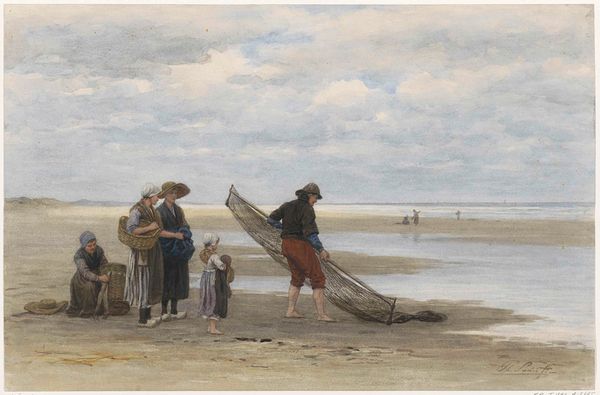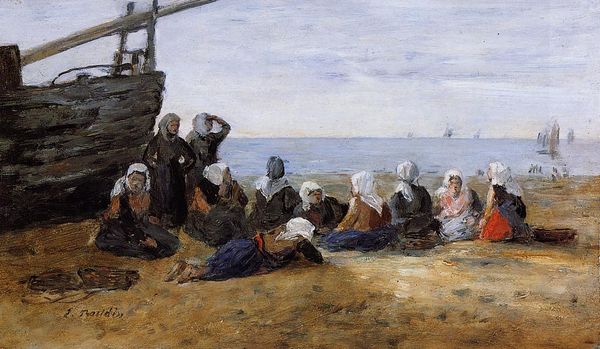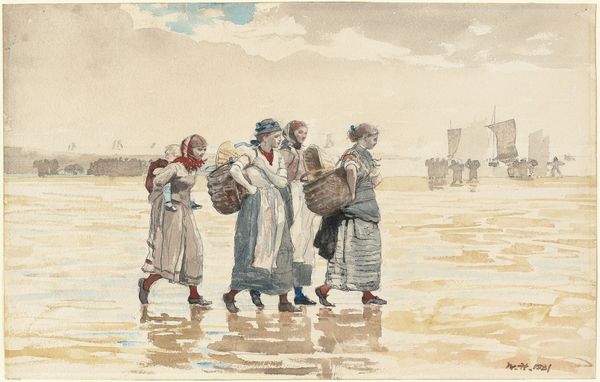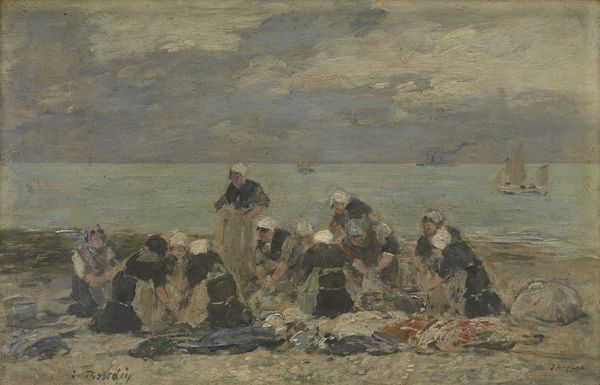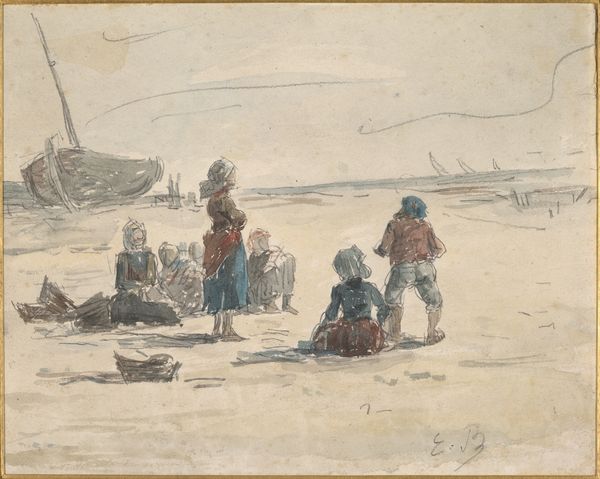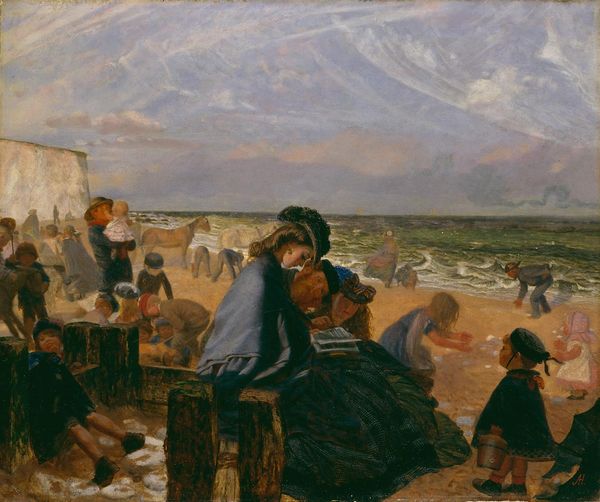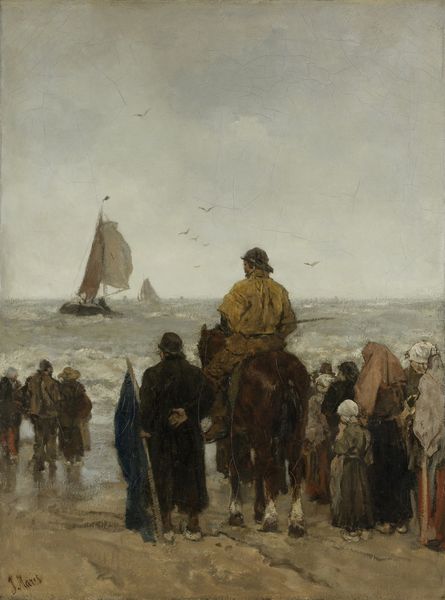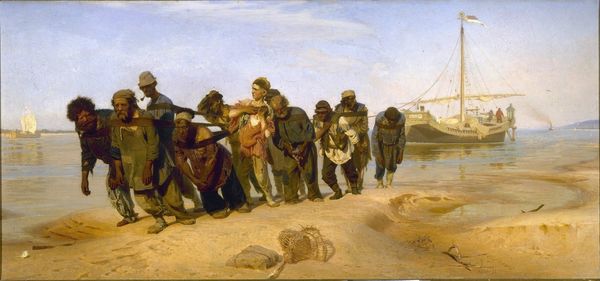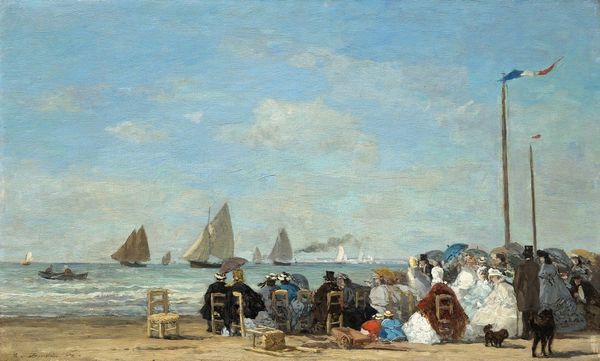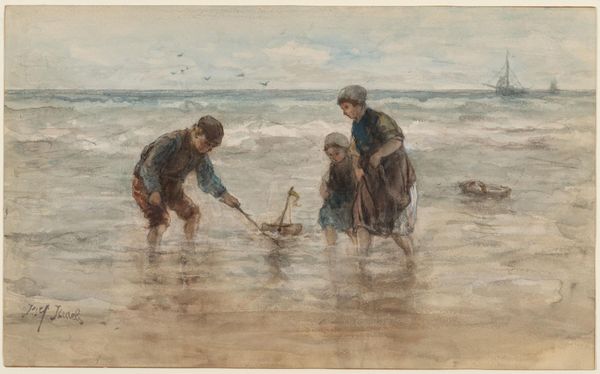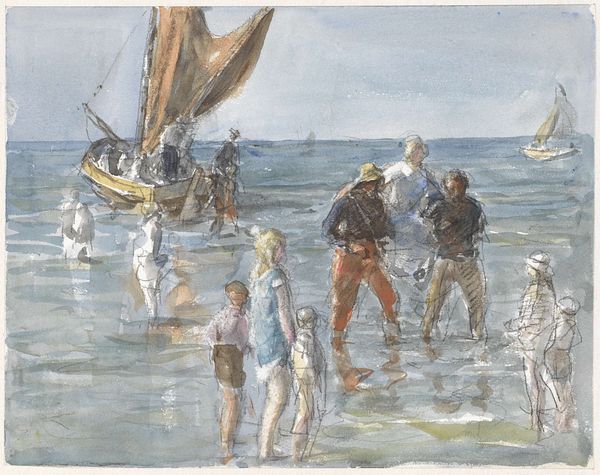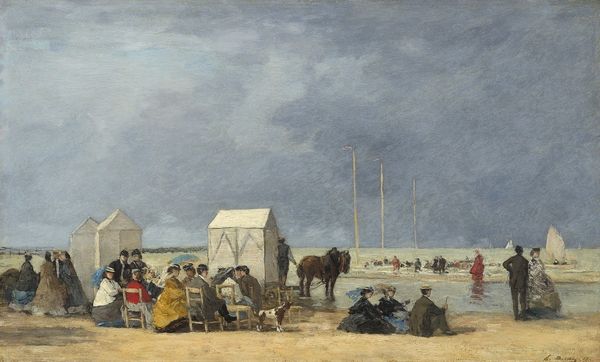
plein-air, watercolor
#
impressionism
#
plein-air
#
landscape
#
figuration
#
watercolor
#
watercolour illustration
#
genre-painting
#
watercolor
#
realism
Dimensions: height 370 mm, width 550 mm
Copyright: Rijks Museum: Open Domain
Curator: The watercolour before us, “Fishwives on the Beach at Scheveningen”, was completed around 1880-1885 by Bernardus Johannes Blommers. The piece is currently held here at the Rijksmuseum. Editor: My immediate reaction is to its subtle greyscale tonality, so characteristic of the Impressionists' attempts to capture fleeting atmospheric effects, but here somehow suggesting also the weight and weariness of the working day for these women. Curator: It's certainly a study in muted tones, capturing a specific place, but more broadly, I'm interested in its depiction of labour, specifically gendered labour within the socio-economic context of the 19th century Netherlands. Editor: Absolutely. And the scale adds to that effect, doesn’t it? In terms of artistic representation of everyday labour in the Netherlands at this time, Blommers fits within a well established school; the Hague School, and, further back in time, Realist painters like Millet or Courbet immediately spring to mind. The social positioning of this genre within art production, though, raises some interesting questions. Curator: For me, the work becomes especially resonant when considering feminist readings of art history. The labor performed by these fishwives, often overlooked in historical narratives dominated by male figures and heroic narratives, takes centre stage. The beach, then, isn't just a picturesque landscape but a site of work, survival, and a testament to female resilience. The women, too, could be perceived in line with post-colonial theory that sees how Western culture paints subalterns or other cultures. Editor: I agree that the positioning of the women as ‘subjects’ carries some inherent power relations. Do you think, though, that there are contemporary works of art we could view productively in dialogue with this? Something, say, by contemporary artists investigating labour, gender, or social identity in coastal communities? It's in considering that intersection, I think, that this genre painting takes on an unexpected vitality. Curator: Absolutely, bringing in those modern conversations makes the viewing experience infinitely richer and reveals how relevant this work can still be today! Editor: Yes, situating "Fishwives on the Beach" in this expanded context reminds us that these apparently straightforward realist paintings can offer insight into broader socio-political forces.
Comments
rijksmuseum about 2 years ago
⋮
The small, square-rigged bomschuits brought their catch onto the beach at Scheveningen to be sorted and auctioned. Fishwives filled their large baskets with fresh fish for sale in the town. This watercolour is not from the Drucker-Fraser collection, but from a legacy left by Jhr. P.A. van den Velden in 1892. He laid the ground for the Rijksmuseum’s collection of 19th-century drawings and watercolours.
Join the conversation
Join millions of artists and users on Artera today and experience the ultimate creative platform.
